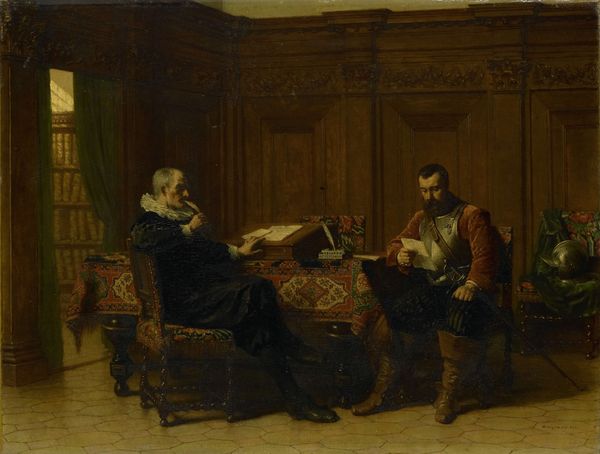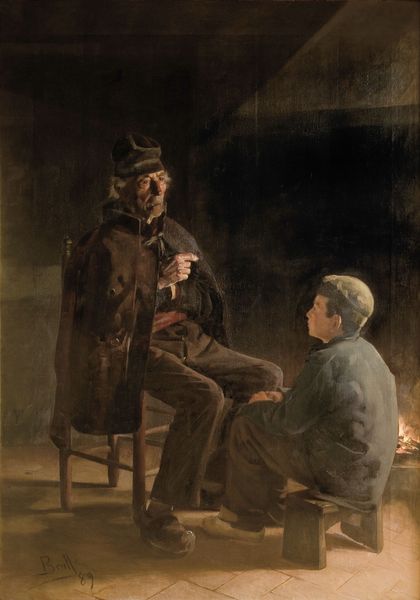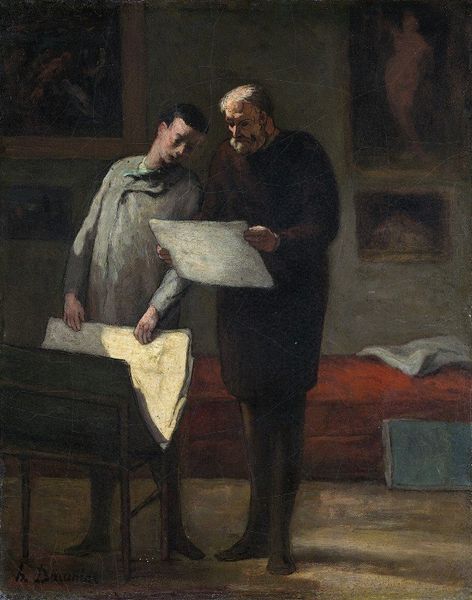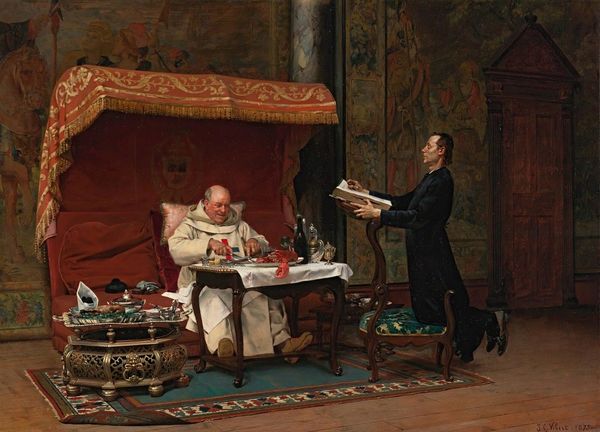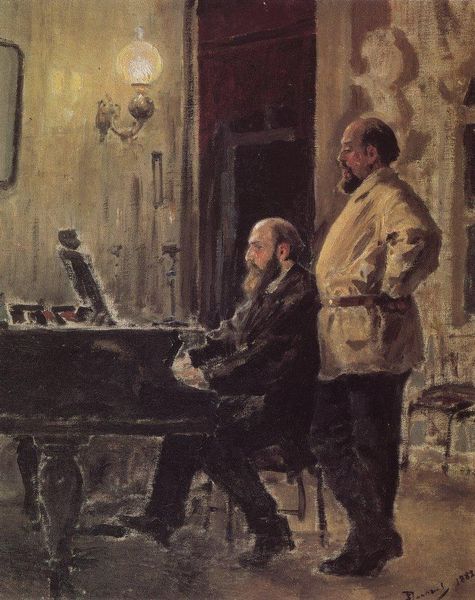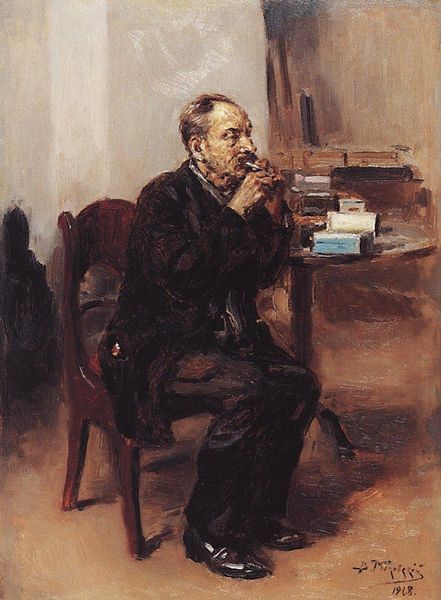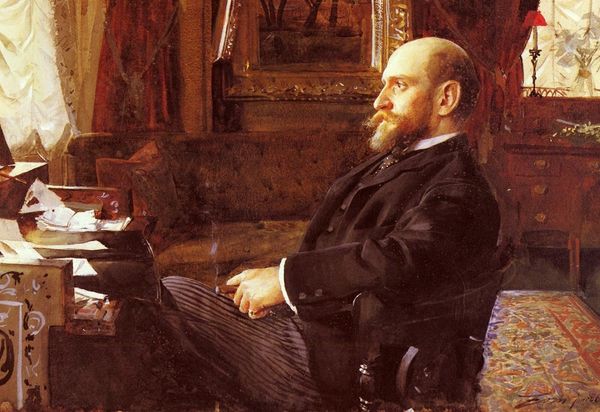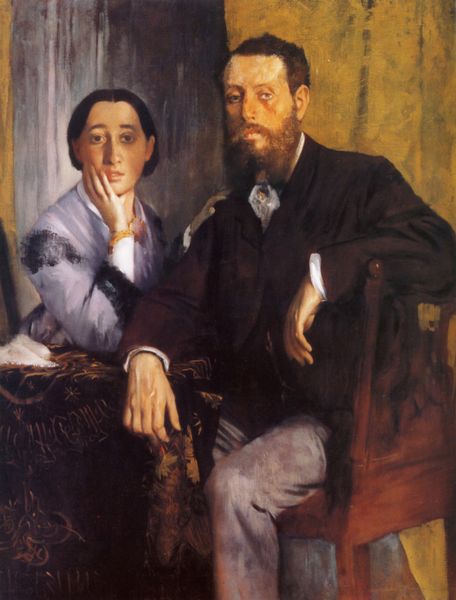
painting, oil-paint
#
portrait
#
painting
#
oil-paint
#
charcoal drawing
#
painted
#
group-portraits
#
genre-painting
#
academic-art
#
realism
Copyright: Public domain
Editor: So, this is Eastman Johnson's "The Funding Bill - Portrait of Two Men," painted in 1881 using oil paint. I'm immediately struck by the intense atmosphere of negotiation or debate, almost a silent tension hanging between them. What can you tell me about the context in which this was created? Curator: This piece gives us insight into the intersection of art and political power at the time. Eastman Johnson often depicted scenes of American life. However, this one presents a far less idyllic vision, don't you think? Who do you suppose these men might be? Editor: Given the title, I imagine they're figures involved in politics or finance, deeply entrenched in the late 19th-century funding processes. They definitely seem powerful. How did paintings like this function in the cultural landscape of the Gilded Age? Curator: Portraits like this served not only to commemorate individuals, but also to legitimize their influence and position within the social hierarchy. It's also worth considering that Johnson was working during a period of significant debate over the role of government in funding various projects, think about railroad construction and westward expansion, or the arts! Does knowing this change your initial perception of that "tension" you felt? Editor: It does, significantly! Now the painting seems less like a generic portrait and more like a snapshot of the power dynamics inherent in those crucial financial decisions. How do you see this reflected in the composition itself? Curator: Notice how their physical proximity, but contrasting gazes, suggests a delicate balance of cooperation and conflict. Also the fact that both the men's attire is very formal speaks volumes. What do you think would have been the role of institutions commissioning and displaying work like this back then? Editor: Museums or galleries showcasing such a portrait would have inadvertently contributed to reinforcing the social and political power of the figures depicted, which frames art as inherently involved in political narratives, it’s super interesting. Thanks, this really shed a light on the power behind that tense scene! Curator: Indeed! It reminds us that art, even seemingly straightforward portraiture, operates within a complex web of social and political forces. Very insightful conversation!
Comments
No comments
Be the first to comment and join the conversation on the ultimate creative platform.
